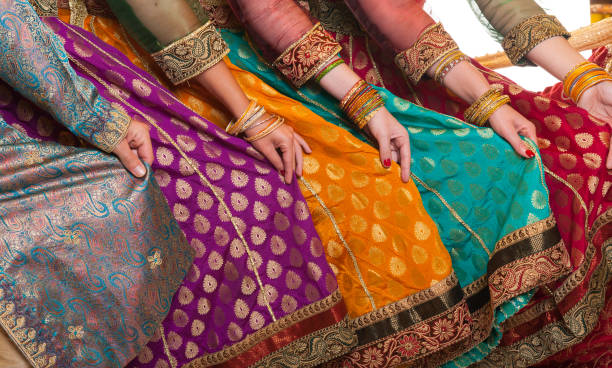Introduction
Asia is a great source of inspiration for fashion, which has traditionally drawn from culture. Traditional women have donned garments that express stories about history, art, and social identity for centuries. More than garments, ancient Asian outfits tell stories about craftsmanship, symbolism, and regional identity. Designers reinvent these vintage costumes to bring them to current wardrobes. Some of Asian women’s most iconic designs can help us comprehend how they have affected and continue to inspire fashion worldwide.
The Timeless Charm of the Sari in Indian Culture
Some of the most famous and functional clothes are the Indian sari. The sari is a long garment that South Asian women wear differently depending on their situation. The drape’s ingenuity makes it lovely. It highlights movement and delicate needlework, weaving, or printwork. The sari can showcase artisanal skills like zari gold-thread work and hand-painted embellishments.
The current sari trend is shifting. Designers use pre-stitched versions, fusion drapes, and colourful fabrics to make it comfortable for younger people. Sari-inspired gowns are featured on international runways and worn by celebrities worldwide to show off their culture and flair. The sari demonstrates how traditional clothing may be updated without losing its femininity. Discover timeless elegance and modern style with our collection of Womens Asian Clothes.
The Regal Presence of the Hanbok in Korea
Another traditional clothing that influences design is the Korean hanbok. Its rigid-yet-flowing design remains attractive. A hanbok traditionally has a jeogori (short jacket) and a chima (voluminous, high-waisted skirt). Its focus on natural elegance over body shape makes the wearer seem noble and royal. Hanbok patterns and hues symbolise peace, luck, and social identity.
In recent years, “modern hanbok,” or hanbok-inspired garments, have become popular. These designs combine shorter skirts, lighter fabrics, and simpler coats to preserve the classic outfit but make it more practical. Even in fashion, hanbok parts are admired for their structure. This has inspired designers to explore high-waisted skirts, layering, and basic styles like this classic ensemble.
The Artistic Flow of the Ao Dai in Vietnam
Vietnamese ao dai are another lovely example of tradition and flair. The ao dai is a long tunic with side splits worn over trousers. The delicate lines and flowing fabric make the wearer seem better. It is modest and attractive. Silk is use and features intricate stitching or designs.
Modern ao dais include shorter cuts, fresh materials, and creative ornamentation. Its flowing form has inspired Asian and international fashion designers to create stunning gowns and dresses that follow global trends.
The Cultural Richness of Southeast Asian Attire
These traditional garments from Southeast Asia inspire fashion, along with the more famous ones. The kebaya, a fitting shirt with a batik sarong, represents Indonesian femininity and inventiveness. It uses hand-dyed materials and exquisite workmanship. Filipino baro’t saya is also popular. The spectacular butterfly sleeves still inspire high-end fashion designers.
Each garment has a history, identity, and art narrative. Their influence is shown in global fashion collections that employ varie fabrics, stitching methods, and structural aspects. They demonstrate how local traditions may gain worldwide recognition while retaining their cultural identity.
From Tradition to Modern Runways
Modern designers revisit these historical clothing to discover fresh methods to portray their essence. Modern and timeless patterns are inspire by the hanbok’s structural beauty, sari’s fluidity, cheongsam’s elegance, and ao dai’s flow.
This reimagining preserves Asian fashion worldwide. It illustrates that genuine style often originates from culture and history. Cultural history is still essential in present design, since these traditional ensembles’ designs, fabrics, and details affect both high-end and casual fashion.
Final Thoughts
Asian women’s traditional garments are cultural symbols that have been around for centuries and are important. The beautiful kimono and brilliant sari combine tradition and unique taste. These clothing inspire designers worldwide because they look nice and express stories about identity, art, and strength.
Today’s networked world gives these outfits more influence on runways, wardrobes, and global fashion tales. Looking back at these vintage designs honours our cultural past and opens up new stylistic options. Asian women’s traditional clothing have shaped fashion now and in the future. Their flair and creativity will endure.


